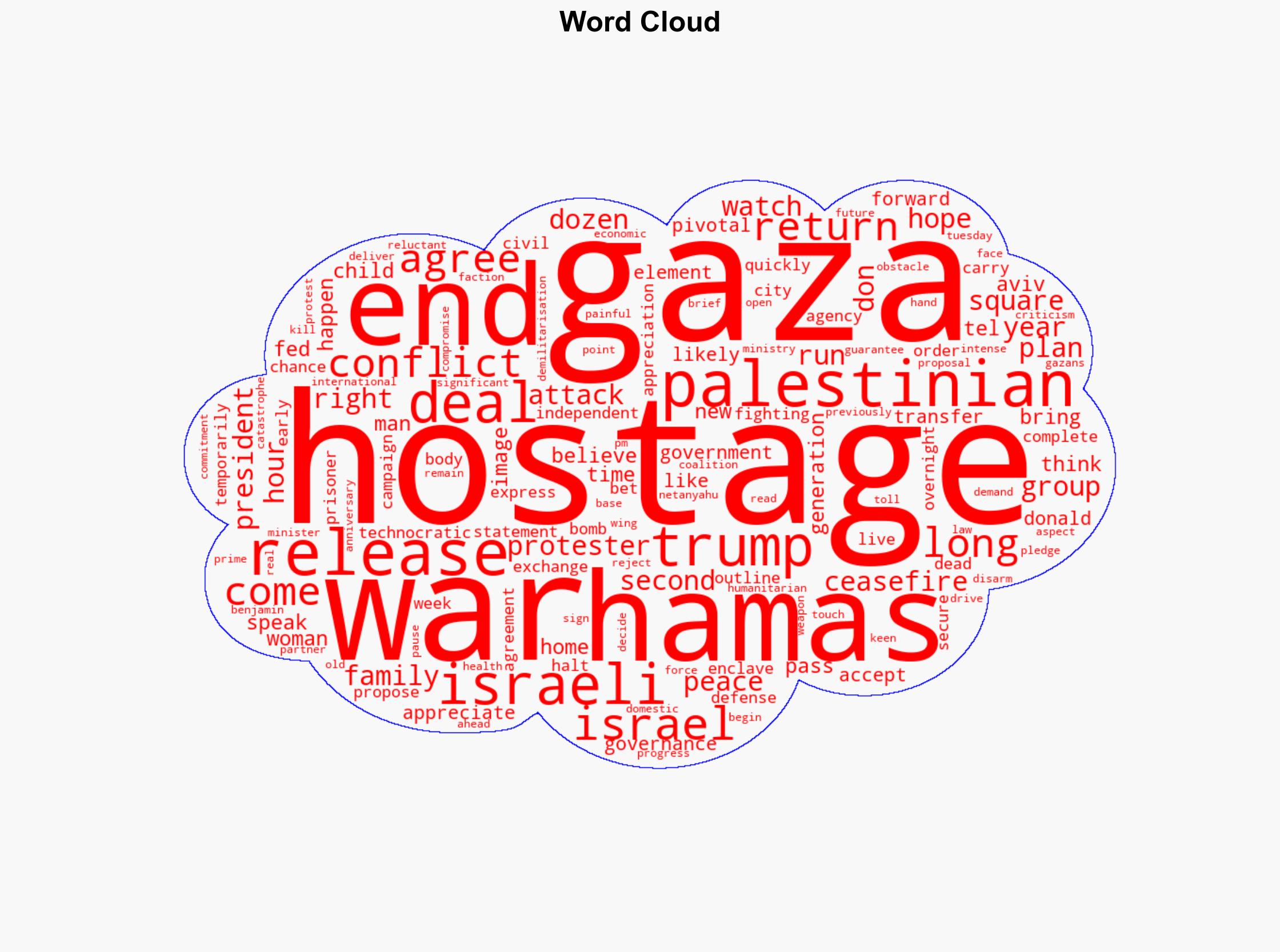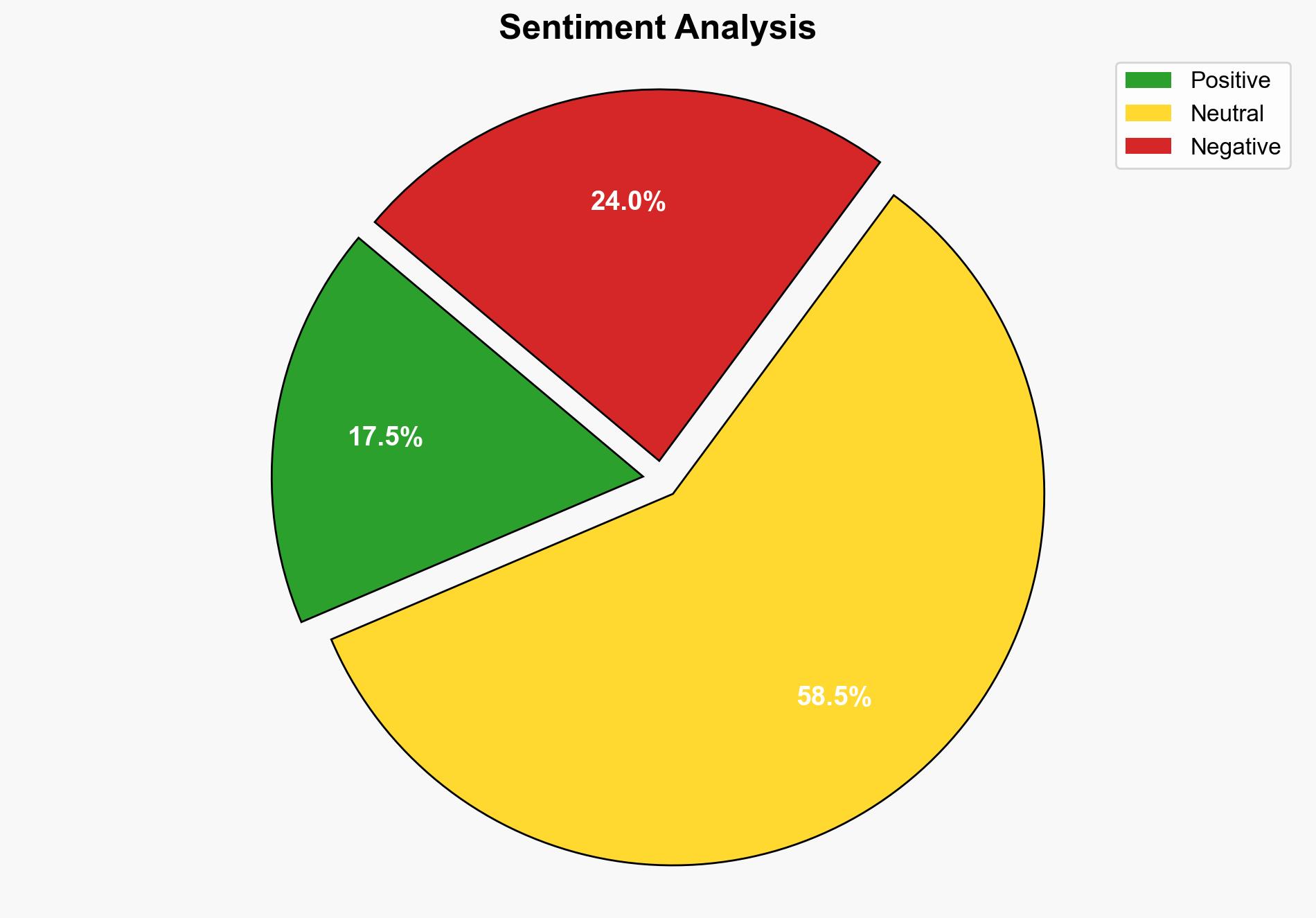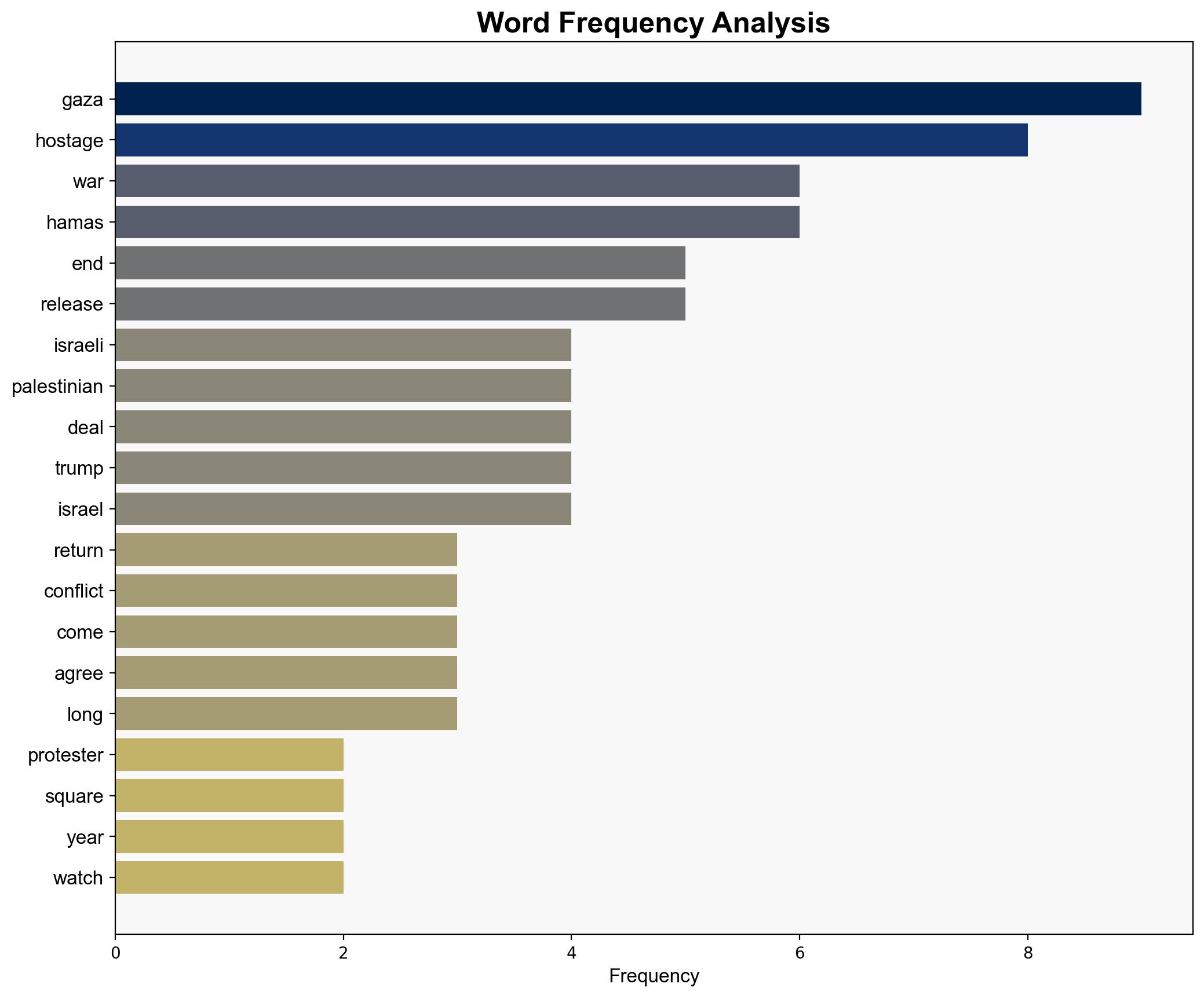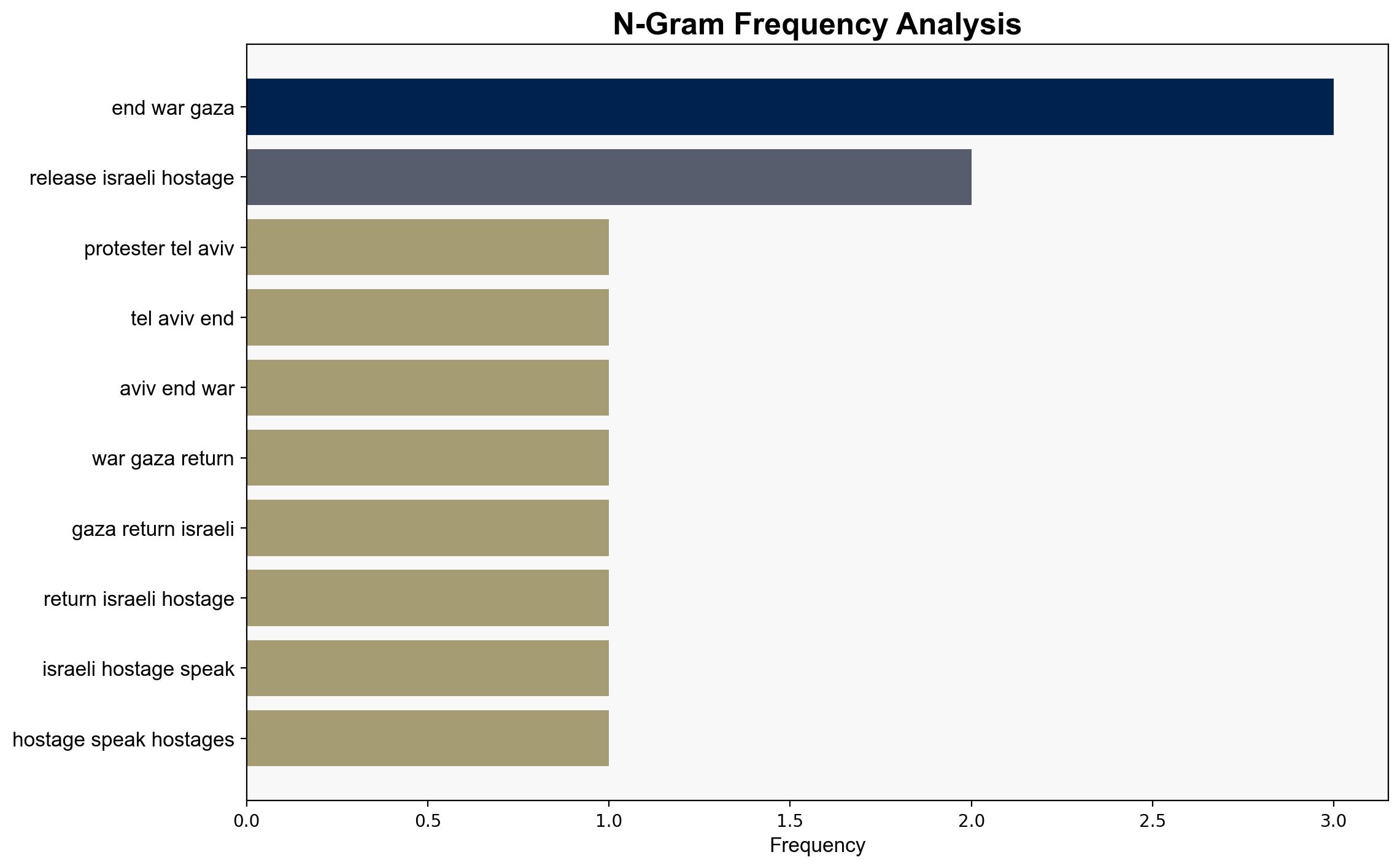Pivotal 48 hours as Gaza ceasefire deal edges closer – RTE
Published on: 2025-10-04
Intelligence Report: Pivotal 48 hours as Gaza ceasefire deal edges closer – RTE
1. BLUF (Bottom Line Up Front)
The most supported hypothesis suggests that a ceasefire agreement between Israel and Hamas is imminent, facilitated by external diplomatic efforts, notably involving Donald Trump. However, significant obstacles remain, particularly regarding the disarmament of Hamas and internal political pressures within Israel. Confidence Level: Moderate. Recommended action includes continued diplomatic engagement and preparation for potential escalation if talks fail.
2. Competing Hypotheses
Hypothesis 1: A ceasefire agreement will be reached within the next 48 hours, driven by international diplomatic pressure and mutual exhaustion from prolonged conflict. This hypothesis is supported by reports of ongoing negotiations and the involvement of influential mediators.
Hypothesis 2: The ceasefire talks will collapse due to unresolved issues, particularly Hamas’ disarmament and internal political opposition within Israel. This scenario considers the historical intransigence of both parties and recent domestic criticism faced by Israeli leadership.
3. Key Assumptions and Red Flags
– Assumption: Both parties are genuinely committed to a ceasefire and are willing to compromise on key issues.
– Red Flag: The lack of explicit commitment from Hamas to disarm, which has been a non-negotiable demand for Israel.
– Potential Bias: Over-reliance on diplomatic statements without corroborating actions on the ground.
– Missing Data: Details on the specific terms of the proposed ceasefire and the role of other regional actors.
4. Implications and Strategic Risks
– If a ceasefire is achieved, it could lead to a temporary reduction in hostilities, providing humanitarian relief in Gaza.
– Failure to reach an agreement may result in renewed violence, further destabilizing the region and exacerbating humanitarian crises.
– Economic impacts include potential disruptions in regional trade and increased military expenditures.
– Geopolitical risks involve potential shifts in alliances and increased influence of external actors like the United States.
5. Recommendations and Outlook
- Encourage continued diplomatic efforts and support confidence-building measures between the parties.
- Prepare contingency plans for humanitarian assistance in case of renewed conflict.
- Best Case: Successful ceasefire with gradual implementation of disarmament and governance reforms.
- Worst Case: Breakdown of talks leading to intensified conflict and regional instability.
- Most Likely: Temporary ceasefire with unresolved underlying issues, requiring sustained diplomatic engagement.
6. Key Individuals and Entities
– Donald Trump: Involved in mediating the ceasefire talks.
– Benjamin Netanyahu: Facing domestic pressure regarding the ceasefire terms.
– Hamas Leadership: Key decision-makers in the ceasefire negotiations.
7. Thematic Tags
national security threats, counter-terrorism, regional focus, diplomatic negotiations




